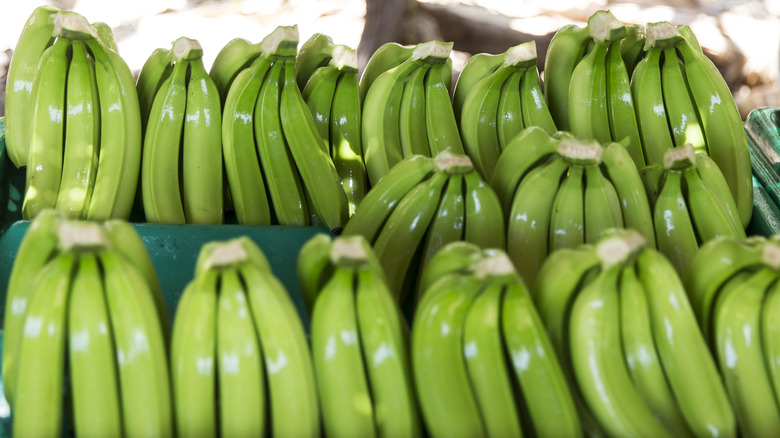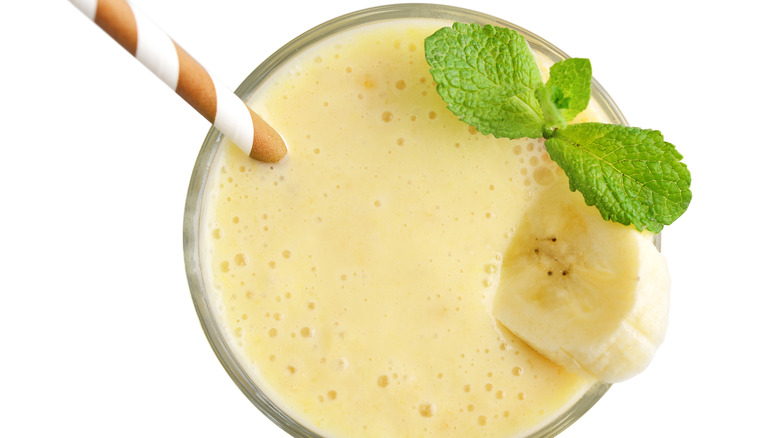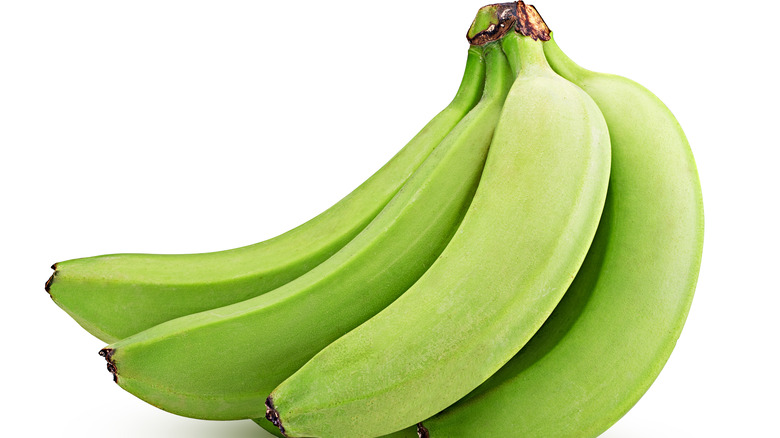What Are Green Bananas And What Do They Taste Like?
Those of us who love bananas will have a preference for when the fruit should be enjoyed. There are those who like their bananas when they're at a stage just before (or just as) they become a textbook bright yellow, while others might prefer them when they've gone a bit past that, with a few brown speckles so that the fruit is as sweet as it can get without being overripe.
But while yellow bananas aren't bland and don't have that weird, waxy mouthfeel that green bananas can have, the ripening process affects the banana's makeup so much that green and yellow bananas may as well be two different fruits. Healthline says green bananas have between 70% to 80% of a special, good-for-you resistant starch that cannot be digested and behaves in the human body pretty much the same way fiber does. But during the ripening process, this starch level drops off and is converted into sugars sucrose, glucose, and fructose — leaving ripe bananas with just 1% of starch.
Before you say, "Well, it's just starch," that soluble type of starch carries health benefits with it, including lower levels of blood sugar and decreased appetite, making it a gift for those who suffer from type 2 diabetes (via Healthline).
Mashed green bananas can be added to smoothies, soups, and sauces
When consumed in their original state, green bananas may leave much to be desired, which is why they are likely best harnessed as an ingredient and incorporated into other dishes. This is common in Brazil, where green bananas are pureed and sold commercially. According to The Washington Post, in their processed form, green bananas can be used to make healthier, vegan versions of the popular Brazilian candy known as brigadeiro, which is usually made with cocoa, butter, and a whole lot of sweetened condensed milk that has been cooked down (via Allrecipes). Mashed green banana, which is also known as banana biomass, can also be added to smoothies, soups, and sauces.
In Brazil, green banana mush is seen as a supplement for fitness enthusiasts and those who want to lose weight, since like its riper sibling, a medium green banana will also pack 105 calories, as well as a significant amount of Vitamin B6 and Vitamin C. The fiber content of a yellow banana is at 2.6 grams, while its carb content is at 22.8 grams and its sugar is at 12.2 grams (via Healthline). The site posits that green bananas have more fiber and lower sugar levels than that, because of the transformation the fruit undergoes as it ripens.
Green bananas can be found anywhere bananas are sold, since the fruit is usually sold unripe
Green bananas can be found anywhere bananas are sold, especially since the fruit is usually picked and sold unripe, so it has time to go from plantation to table without becoming too yellow in the process. In order to cook this particular ingredient, The Spruce Eats recommends grabbing bananas as soon as they appear in the supermarket so you can cook and consume them before all that fiber turns into sugar.
If green banana mash isn't commercially accessible, you can make your own by taking a pound and cooking them up. The Washington Post's Emily Codik recommends boiling them whole, peeling them, and pureeing them up with a bit of water, although cooking them in a pressure cooker does the trick too. Pureed green bananas can then be added to smoothies to add fiber, mixed into soup, or even used as a spread with the addition of spices like garlic and paprika. Freshly made green banana puree can be kept for a week in the refrigerator, and up to a month in the freezer.


